~ 1 2 0 3 ~
return...
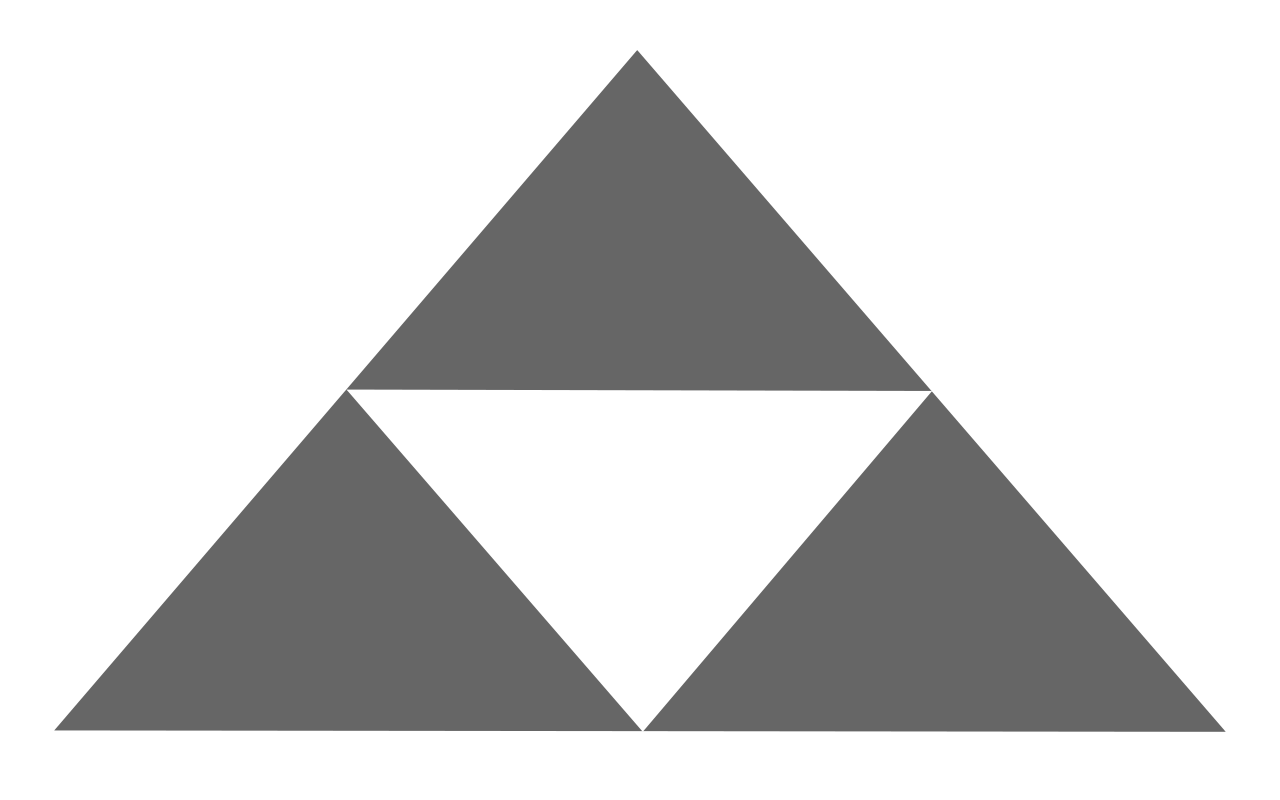
北条氏
The Hōjō clan, rising early in the 12th century, is probably best known for being powerful shikken 執権 (regents, assistant to the shogunate) to the Kamakura Shogunate, which is a pretty big deal given the period (Kamakura period). Because of that, I think it sorta makes the most sense to start with the Shogunate itself around this time, and what the overall government structure of Feudal japan looked like in the 1200s.
The Kamakura Shogunate was the feudal age, military government of Japan during the Kamakura period (1185-1333). Established by Minamoto no Yoritomo 源 頼朝, more on him later, after appointing himself Shogunate proceeding the Genpei War, more on that eventually, the Kamakura Shogunate was revolutionary in that they were the first to take power away from the Emperor in Japan. You see, historically (kofun-heian) the Emperor held the power of civilian government alongisde his Regents. To keep it short, the Genpei War was a 5 year war (1180-1185) between the Taira and Minamoto clans for power over the Emperor's court. The Minamoto clan won, delegated the Emperor to a more symbolic position, and established the Kamakura Shogunate, a true governing body of Japan led by the powerful Minamoto clan, their allies, and plenty of Samurai.
Regardless though, Yoritomo died in 1192, and a decaying Hōjō Tokimasa in his late 60s, desperate to establish power, legacy, and prestige after death, came up with a scheme to position himself as the head of power, and to be honest, I don't really get it. Something something, because Tokimasa was the Shikken, he had the ability to take power over the sons of Minamoto, and when the heirs of the Minamoto clan died out due to the typical horrors of Feudal war, the shikken just ended up being the ones in power. I'd really like to do a deeper dive over this some day, but honestly, the bulk of information on this sort of thing is hosted on Japanese wikipedia, which is filled with technical historical jargon kanji that I'm not familiar with at all. Someday. The important takeaway is that while the Minamoto clan remained the titular Shoguns, it was the Hōjō that held power over Japan at this time.
So then, we understand how they came up in the first place. What did they do with this newfound power at the front seat of Japan's rulership?
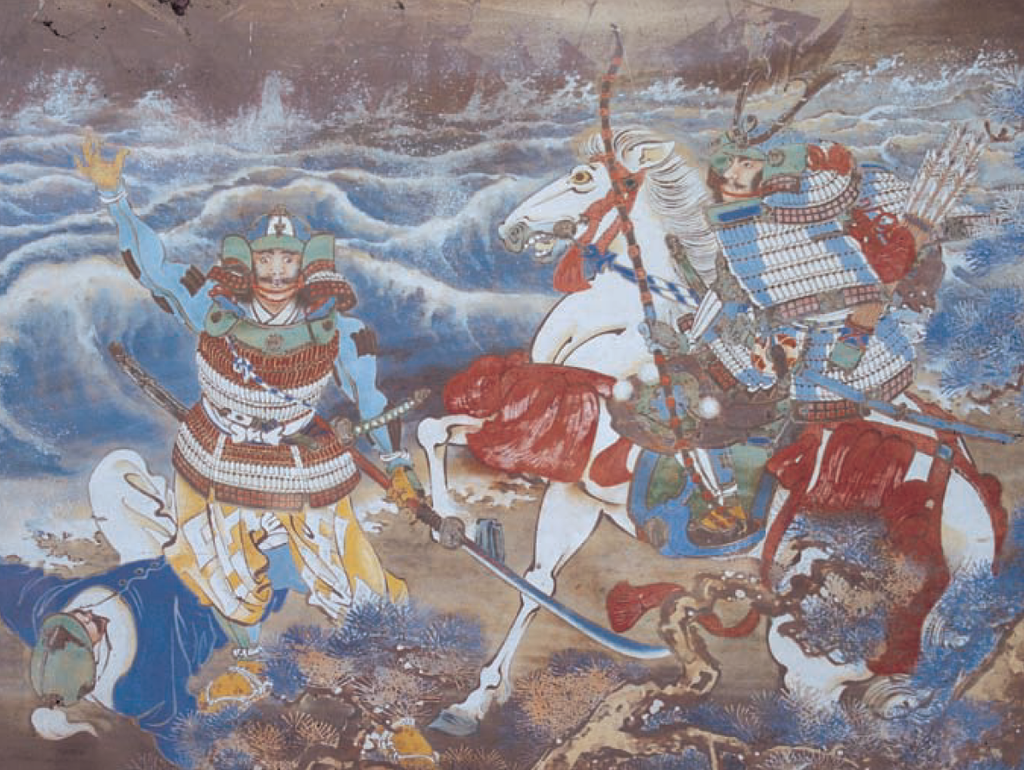
Kublai Khan was kind of a Huge Fucking Problem for Japan. At the time, Kublai's inner circle consisted of those from Korea, China, and other surrounding territories. He owned a lot of land, and thus his court had grown to be pretty multicultural. It just so happened that Wakō pirates (from Wa, an early name for Japan that basically means asshole but really means dwarf) had recently extended support to the Song dynasty over in China, who's been getting kicked around by Kublai anyway due to a war-deciding victory in Sichuan around 1265.
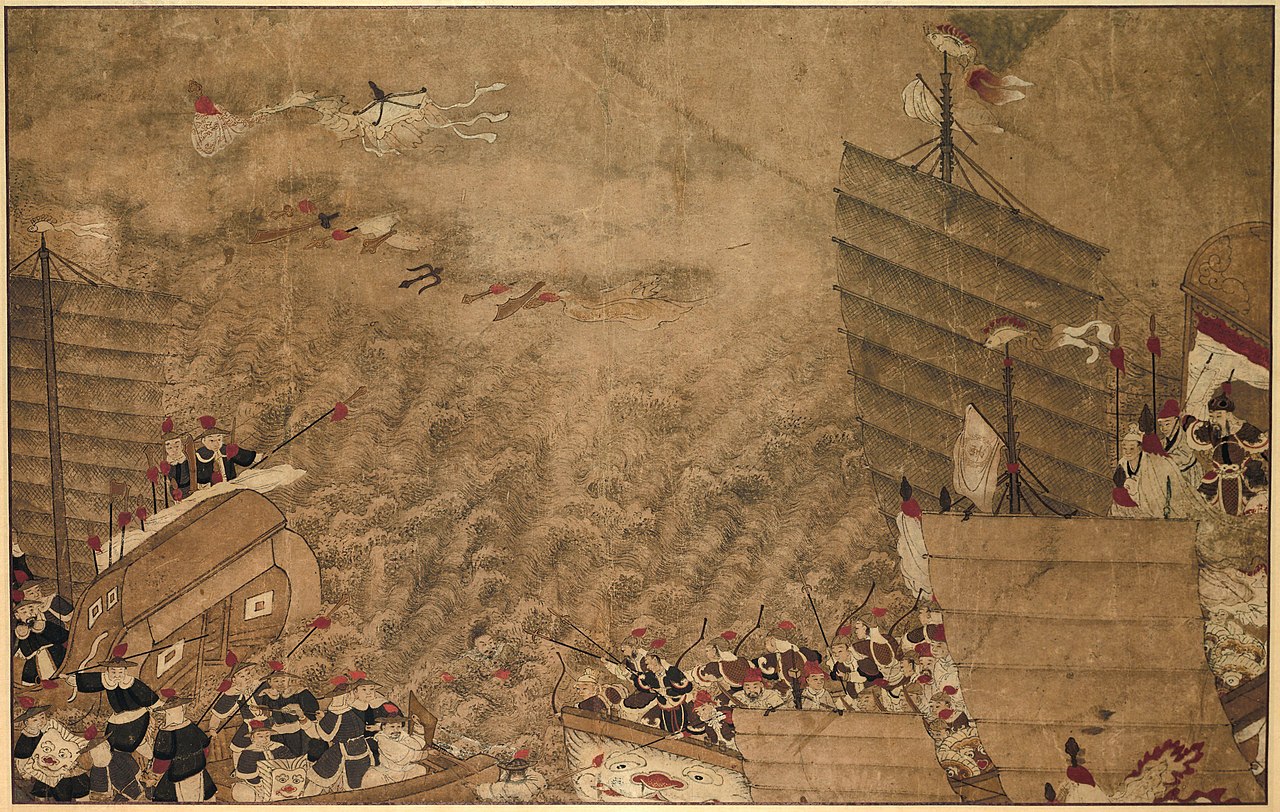
In 1266, the Mongols would send a message that was "Cherished by the Mandate of Heaven", stating basically that because Kublai had control of everything surrounding them anyway, but since Japan hadn't sent any ambassadors declaring their peace, that Japan may as well accept to be under their rule (makes sense right?). Japan, far too busy fighting amongst themselves anyway, completely disregarded the Mongolian emissary. Again, in 1268, the Mongol Emperor would send another heartfelt message to Japan, but Shikken Hōjō Tokimune had his mind made up on sending the emissaries home without reply.
Surely, the only proper response would be for the Mongols to basically make a national holiday out of begging the Japanese to enter vassaldom of the Mongolian Empire. That should work. It definitely DID NOT work, and after being ignored twice in 1269, once in 1271, and a final time in 1272, the Japanese figured they should probably send troops to the shores of Kyushu. Just in case. Send troops they did, and for good reason, as the Yuan invasion force would arrive from Korea (currently under Mongol vassaldom) in Tsushima Island on November 4, 1274. The initial landing was made near Sasuura, which is on the northwestern edge of Tsushima's southern island. Additional landings were made along the straits connecting the two islands, including some on the opposite side near the northern island. Basically, the island of Tsushima was faced with a Mongol force reported (note: by Japanese) to outnumber them 10 to 1 on all sides.
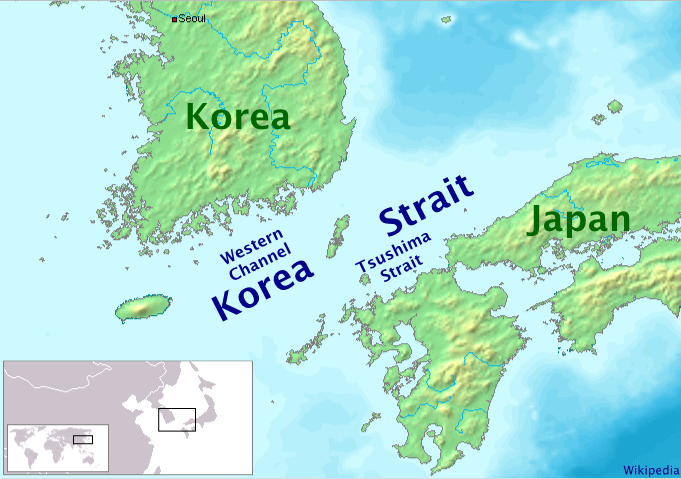
According to the Sō Shi Kafu, a historical record detailed by the Sō clan of Sasuura, 地頭大 Sō Sukekuni (governer) was alerted that a Yuan fleet was spotted just offshore. This gave him time to set up whatever defense he had availible, which happened to be a sad, small retinue of 80 samurai calvary. Sukekuni would then confront a force of 8,000 Mongol warriors aboard 900 ships. The Mongols ignored all negotiation attempts by the Japanese, immediately opening fire with archers upon arrival. It's noted, though, that a mysterious Samurai named Sukesada was able to dismantle a troop of 25 men entirely on his own.
Unfortunately, the efforts of Sukesada alone weren't enough (clearly), and in true honorable samurai fashion, the remaining calvary were ordered to charge into the opposing forces and were easily defeated that night. Most buildings in Sasuura were burned, and the local inhabitants slaughtered entirely. The next few days were spent establishing a defense around Tsushima, claiming the island for themselves while they regrouped.
The massive Yuan fleet left Tsushima on 13 November, days after the massacre that took place in Sasuura. They arrived in Iki island where similarly, 地頭大 平景隆 Taira no Kagetaka, governer of Iki and semi-well known Samurai, would lead an equally pitiful group of 100 calvary into battle against the Mongols before being backed into Hinotsume-jo Castle where they would inevitably commit seppuku due to the overwhelming masses of the Mongol army. Iki structures were burnt, and their villagers similarly eviscerated. A particularly horrendous account states that after winning the battle, Mongol men stabbed Iki women through their palms, stripped them naked, and bolted them to the sides of their ships. Alive. They also went out of their way to hunt down and murder Kagetaka's daughter, just because. I hope this gives you a better look into the level of barbarism the Khan were familiar dealing in.
After the report of both defeats came in to the Hojo shogunate, Tokimune arranged an army of around 3,000 to stand ready in Hakata Bay, where a battle would take placce November 19. Yuan battle strategy was archaic and foreign, and the Japanese defenders were deeply perplexed on how to deal with their formations. It's said that the Yuan would bunch together and create a screen with their shields, rushing forward, grappling and killing anyone they could get their hands on from the outside. Stephen Turnbull details an account where an archer fired an arrow at the shield formation, to which every Mongol in the squadron stopped and burst into erroneous laughter.
Additionally, the Yuan used Firebombs in war; one of the first documented cases of this happening. They used them to burn villages, sure, but Yuan forces also used firebombs to spook horses into unusability. All these dirty tricks are neat and all, but despite this, the fighting only lasted a day. There was really no planning what so ever, as Mongols had never fought Japan, and vice versa, so they kind of just threw themselves at each other violently until it was over. Notably, a young Takezaki Suenaga, despite receiving word from commander Shōni Kagesuke that he is to wait patiently for the Yuan's advance due to difficult terrain, completely ignored this and marched forward towards the beach with his men anyway. He meets with Kikuchi Takefusa, who tells Suenaga that he's just driven out a Yuan camp and taken 2 lives. However, they get there, and not only is that not the case, but their horses get stuck in mud and they're barraged by arrows. Wounded, they retreat to samurai-chad Shiroishi Michiyasu for help, and together the three of them are able to repel... a singular camp. Things weren't going particularly well.
Japan was preparing to take a final stand at Mizuki Castle, but the stand never came. The Yuan never arrived on the mainland, and nobody really knew why, for a time. As it turns out, a divine Kamikaze (great wind) had arrived and swept the Yuan fleet back to where they'd come from. Plenty of Mongol warriors died in shipwreck, and over 50 were captured on shore and executed by the Japanese. Again, historians will tell you it was faulty, river-prepped Yuan ships that were the problem here, but the Japanese have a much more interesting explanation.
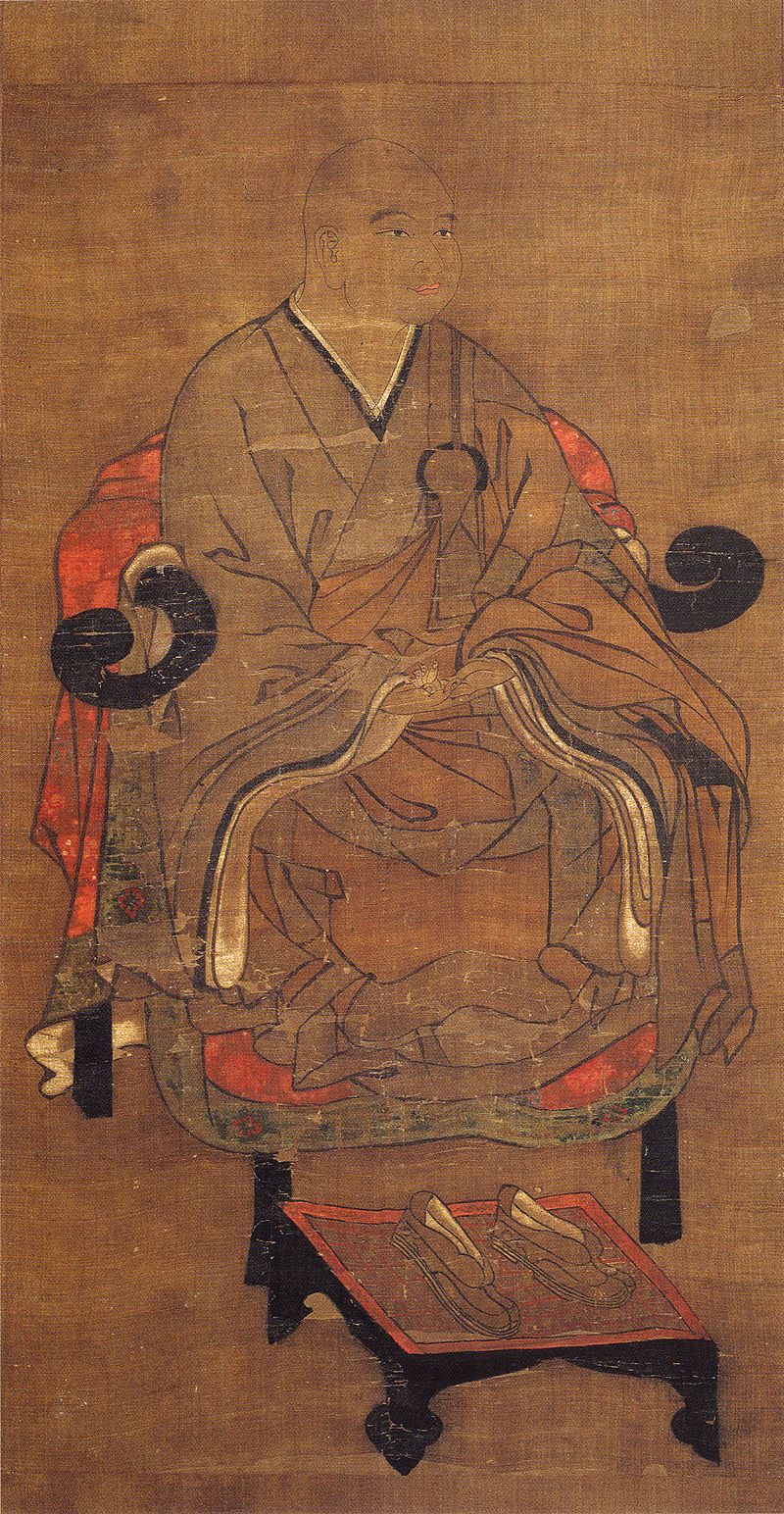
It goes like this: In Kamakura, Shikken Tokimune was terrified of the horrors the Yuan would bring despite his confidence in denying their requests for vassaldom. Mugaku Sogen, his Buddhist teacher, stated that he needed to sit in meditation for a journey of self discovery. Upon finding himself, Tokimune stated "Finally, there is the greatest happening of my life." Sogen asked, "How do you plan to face it?". Tokimune looked towards Kyushu and shouted "Katsu!!". It's said that this shout caused the Kamikaze, and drove off the Yuan invaders without conflict. This story, while seemingly a tall tale, was fundamentally responsible for the spread of Zen Buddhism and Bushido (the Way of the Samurai) across Japan. The obvious and deep cultural implications of this event are one thing, but lesser known is the impact it would have on the gusto of the country overall. They sorta decided that if their primary leader could shout so powerfully that it could level entire armies, that they weren't really afraid of anything.
With the introduction of Bushido, the Samurai in Kyushu were significantly better organized. In 1275, the Hōjō shogunate ordered the construction of forts and stone walls across strategic landing ports along the shore. Shrines were rebuilt, and the populus of Tsushima started to rebuild itself and recover from the horrors that took place last year. In September, 5 emissaries would arrive in Kyushu and refused to leave without an answer to the Mongol's demands. Tokimune, feeling rather large of himself after summoning the Wind Kami on his side, decided to instead take these 5 emissaries to Kamakura and have them beheaded. Five more arrived in 1279, and were similarly beheaded. Sort of just poking the wasps nest at that point.
With the Song dynasty now completely de-established, Kublai decided in 1280 that he would launch an attack on two fronts, as he now had new ports to launch his fleets from. Kublai drew his invading forces from some pretty terrible places, too. I guess when you're fighting war with old-timey people, PEOPLE are actually a pretty scarse resource. Kublai combated this by forcing criminals with death sentences, children mourning the loss of their parents, and literally just random tough looking homeless people to join his attacking force. Exact numbers are unknown, but Kublai documentation states that somewhere around 150,000 troops of varying degrees of martial skill were headed again for Japan's shores.
Similarly graphic attacks were led again on Tsushima and Iki on June 9 and June 14 of 1281 respectively with a fleet of hundreds of ships and hundreds of thousands of loosely trained Mongols. Shōni Suketoki and Ryūzōji Suetoki led the defense on the Japanese front, and despite firearm volleys for a few days, the Japanese were forced to retreat, with Suketoki being killed. Again, Kublai's forces return to their horrific deeds, this time unable to slaughter all the villagers, but indeed able to ensure the brutal death of all the village children.
Hong Dagu and Kim Bang-gyeong, commanders of the eastern side of the Mongol's two pronged attack, decided to take matters into their own hands and attempt to march straight into Mainland Japan. This obviously was a huge mistake, and was made even worse when the Japan decided to host a night raid on Mongol ships, destroying them while they slept. Another legendary Samurai, Kusano Jirō, is known for boarding a ship, setting fire to it, and then taking 21 heads ON HIS OWN while the ship was burning. He lived.
The following day, Kawano Michiari would be made a war hero for, while dealing with the death of his uncle and his own severe wounds, cut down an "excessively large Mongol warrior". Again, history books don't really like to account for this, but in basically ALL the paintings, Mongols kinda look like Oni. I'm willing to bet they made this guy a war hero for cutting down Yokai in the middle of a Mongolian invasion, and not for cutting down a potential NBA player.
Japan would continue these daily and nightly raids until the Mongols decided to retreat and just fight them at sea. The Japanese infamously has never invented boats at this point, and is utterly crushed by the Mongol fleet, with the Mongols describing Japanese ships as small and unsightly. Japan was completely devastated by this naval battle, as they lost a huge majority of their readied troops in the conflict and were running out of defenders. However, on August 15, another Kamikaze would strike, again completely dismantling the Mongol fleet. Thousands of soldiers drifted in the oceans once the calmed, and those that were found and brought to sea, or found retreating from the typhoon, were captured by Japanese. An accurate Korean source states that 7,592 soldiers were caught and executed by Japanese that day. Mongol and Chinese numbers report that somewhere between 60-90% of their armies were killed either by Japanese or by the second Kamikaze. Once again, Japan was saved by the great wind and leadership of the Hōjō.

Unfortunately, there's kind of not a lot else to be said about the Hōjō. Eventually (read: inevitably), The Kamakura shogunate (basically just the Hōjō at this point) would be overthrown by Ashikaga Takauji 足利尊氏, who would establish the following Ashikaga shogunate. It's not like the Hōjō did anything particularly nefarious to their people or anything. The Ashikaga clan just wanted control, and they got it, as tends to be the case with these old Japanese clan wars. Nonetheless, this was pretty fun to write about. The Hōjō's story has a lot of weird coincidental things that led to their success, and I really think it reflects how fickle the whole thing was back then. Anyone could rise to power, claim they had some insane godly powers, and lead Japan on their back; that's just how it was if you were smart and famous enough.
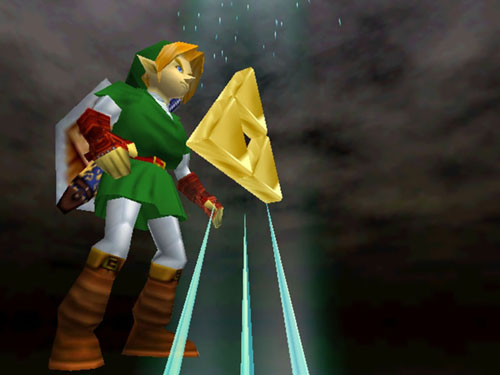
Right. So, there's this. I'm sure the first thing that pops into many people's heads upon seeing the Hōjō clan Mon is "is that the triforce?". Yeah, actually it is, more like the Triforce is the Hōjō clan Mon, but I digress. The Hōjō use the Mitsuuroko emblem as their Mon, and the story goes as follows. When Hōjō Tokimasa meditated once, he prayed that his descendants would be as prosperous as he. It's said that a great Dragon Kami appeared before him, and granted his request. When the deity left, it left behind three scales, and each triangle in the Mitsuuroko was one of the three scales. The whole Triforce thing elaborates by saying that they each represent Power, Wisdom, and Courage, but I don't really have a source on this applying at all to the original Mitsuuroko. It's still pretty dang cool though.